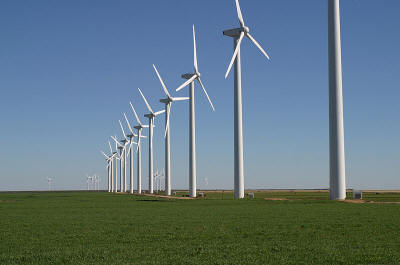|
I find it somewhat comical when scientists and others who publicly express skepticism about a looming man-made global warming catastrophe are accused of being in the pocket of Big Oil.
Here we are referring to oil and gas… master resource trade commodities that the entire world urgently depends upon.
First, regarding that “green” ethanol, consider that it really produces little or no net fuel gain at all… not after the diesel required to power the tractors needed to plant, fertilize and harvest all that corn, along with the energy needed to brew it into 180-proof grain alcohol, are factored in.
Then, for those who care, after CO2
emissions released in producing it and burning it in vehicles are
accounted for, there’s not much difference, if any, compared with
petroleum there either. What should matter to everyone, however, is
that ethanol has a much lower energy density than gasoline, meaning
that it yields fewer miles per gallon.
Koch Industries, through its
subsidiaries Flint Hill Renewables and Koch Supply & Trading, for
example, has purchased several ethanol plants in Iowa, and together
with its Minnesota refinery, reportedly has the capacity to supply
about one-tenth of the U.S. market.
He went on to say,
Yes, and why blame them? Why pass up
money that can be made blending sweet lemonade petroleum with grain
alcohol to produce bitter lemon juice… at least so long as voters
are gullible enough to tolerate such state and federal lunacy, and
taxpayers and consumers can afford to cover the extra costs.
Over the past six months three
refineries supplying about half of all the East Coast’s gasoline,
diesel and jet fuel have
closed down in large part due to overly
burdensome environmental compliance costs. Philadelphia-based
Sunoco’s Northeast refinery business lost nearly $1 billion over the
past three years after spending more than $1.3 billion to meet
stricter rules.
Premised upon theoretical climate
benefits, the EPA is actively pushing to leverage such a transition
to this “cleaner” alternative. Asserting authorization under the
Clean Air Act to issue greenhouse gas (GHG) standards for motor
vehicles as a “regulated air pollutant”, they propose to impose CO2
restrictions upon model year 2017 and later light-duty trucks.
Their latest gambit is to try to link
this safety-proven six-decade-old technology to drinking water
pollution.
And since the spinning reserves don’t
stop consuming fuel when wind generation is occurring, any energy
savings or CO2 emission reductions are largely
mythological.
Output also varies greatly according to location, topographical features, and time of year. Although Texas is one of the most productive wind energy states, averaging about 16.8% of installed capacity, the Electric Reliability Council of Texas assigns a value of 10% due to unpredictability.
Only about 20% of that capacity is
generally available during peak load demand periods (about 5:00pm),
while average generation during off-peak time averages about 40% of
capacity.
Also, since it is the most costly power
source of all, currently providing only about 0.01% of U.S.
electricity, don’t expect it to significantly change the U.S. energy
picture any time soon.
Here’s where the global warming regulatory crowd at EPA are doing all they can to help the Big Oil & Gas guys, whether they asked for it or not. Then again, the EPA probably isn’t the coal industry’s biggest problem anyway, and is only hastening its inevitable decline. A greater adversary resides in the free market form of that cheaper, cleaner and abundant natural gas.
As Jone-Lin Wang, head of global
power research for HIS CERA
told the Wall Street Journal, no other
threat to coal “even comes close.”
Experts predict that 10% to 20% of
coal-fired generating capacity will be retired by 2016.
Senators John Heinz (R-PA) and Timothy Wirth (D-CO) had cosponsored “Project 88” to provide a pathway for converting environmental issues into business opportunities. Media-fueled alarm about acid rain provided a basis for legislation to create markets for buying and selling excess sulfur dioxide and nitrogen dioxide emission credits, and Project 88 became the Clean Air Act of 1990.
Enron was a major SO2
cap-and-trade player.
Unlike SO2, CO2
wasn’t considered to be a pollutant, so the EPA had no authority to
regulate it. But national hype about a global warming crisis
advanced by then-Senator
Gore’s highly publicized 1988 congressional
hearings on the subject soon appeared to provide a dream opportunity
to change that.
Kyoto presented the first step toward creating a carbon market that Enron desperately wanted Congress to support.
An internal Enron memorandum stated that Kyoto would,
The rest is history.
While the U.S. Congress voted
unanimously to prevent U.S. participation in Kyoto, and the 2010
House mid-term elections killed cap-and-trade prospects, the war
against global warming-fueled coal still lives on in the heart and
hunger of an ever-expanding EPA regulatory bureaucracy.
|

